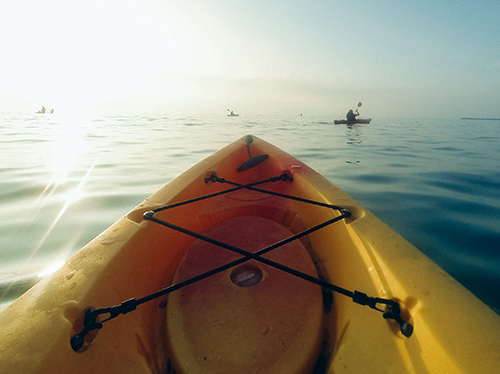Silas Alward Cheesman was a pilot known for his ability to adapt to unforeseen circumstances. A couple of crash landings, the odd flight in a blinding snowstorm, the occasional late-night water take-off—Al Cheesman survived it all. He was also known for his ability to fix any kind of engine, even under the worst circumstances; picture a flying version of Red Green. What Cheesman could have done with a roll of duct tape!
A New Brunswick pilot’s taste for adventure has flown him straight into a place in aviation history books.
Silas Alward Cheesman was a pilot known for his ability to adapt to unforeseen circumstances. A couple of crash landings, the odd flight in a blinding snowstorm, the occasional late-night water take-off—Al Cheesman survived it all. He was also known for his ability to fix any kind of engine, even under the worst circumstances; picture a flying version of Red Green. What Cheesman could have done with a roll of duct tape!
Perhaps it’s not surprising, then, that he became the first Canadian to fly in the Antarctic, a role that became his claim to fame in aviation circles.
Al Cheesman was born in Saint John, NB, in 1900. His interest in flight became evident at age 10, when he took a snow sled and a sail, and built his first aeronautical contraption. The sled became airborne—and stayed airborne for some distance—every time it hit a bump on the way down the hill.
As a young man, Cheesman took courses in mechanical drawing and automotive electrics. Later, he worked as a mechanic on a fleet of Aeromarine Airways flying boats in the US. In 1925, Cheesman moved to Sault Ste. Marie, Ont, where he maintained the fleet of forestry patrol aircraft for the Ontario Provincial Air Service.
It was during these years that his reputation for being able to fix any engine or airplane problem was established. In 1927, the Canadian government was supporting pilot training for civilians; he studied at Camp Borden, Ont, and became a licensed pilot; the next year, he joined Northern Aerial Mineral Explorations out of Toronto, where he frequently and fearlessly flew northern mining exploration expeditions under extreme snow and ice conditions.
It was his ability to solve mechanical problems and his northern piloting experience that ultimately led to the job that would solidify his legacy within Canada’s aviation fraternity.
In 1928, Cheesman was approached by Sir Hubert Wilkins, who was in search of a pilot for his next exploratory expedition to the Antarctic. Wilkins had been authorized by the British government to make territorial claims on behalf of the Crown, and he needed someone who had wintertime flying experience.
.jpg)
Wilkins was aware that Cheesman was already employed, so he asked him to recommend a pilot. Cheesman—not one to pass up an opportunity to gain a feather in his cap—recommended himself.
Cheesman and Wilkins arrived at the South Pole in December 1929 and spent about three months in the region, often flying under dangerous conditions. A biography of Wilkins includes his description of one of his adventures with Cheesman: “It was impossible to see more than a few feet through the swirl of snow, so we were forced down to within a few feet of the loose ice.... Trusting we would not strike an iceberg... I told Cheesman to turn back.... Just as the plane came around, we caught a glimpse of a mountainside through the storm. Two or three minutes’ delay in turning would have meant a crash.”
The intrepid explorers returned to New York in March 1930. Later, Wilkins said of Cheesman, “He turned out to be as fine a pilot and companion as one could wish for.”
After his return, Cheesman started Explorer Airways in Sault Ste. Marie, and made a name for himself through the 1930s bush flying in Northern Ontario—flying prospectors into remote areas, taking hunters and fishermen into the northern wilds and delivering supplies to hunting camps and remote communities.
Cheesman’s reputation for grace under pressure was truly put to the test one day, on what was supposed to be a typical bush flight. At an altitude of about 1,000 feet, his aircraft’s engine died, restarted, and then backfired. Oil on the exhaust pipe caught fire. Within seconds, the plane was engulfed in flames. Although he had a parachute, Cheesman stayed with the aircraft, and brought the float plane down safely onto the nearest lake.
In the summer of 1937, his thirst for adventure inspired him to join Wilkins and Herbert Hollick-Kenyon on an Arctic search for a Russian pilot and his five-member crew, who had disappeared on an exploratory flight from Moscow to California. For the next seven months, Cheesman and his crew flew from a base camp at Point Barrow, Alaska, in search of the lost crew. By the end of their unsuccessful search, the team had flown more than 35,000 miles.
Just before the start of the Second World War, Cheesman received a frantic call from a doctor in Sault Ste. Marie, who told him that a woman in the bush just north of them had been shot and needed medical attention. Although it was early evening, Cheesman agreed to make the flight with the doctor aboard.
At last light, he set his aircraft down on the water, guiding it around the many large rocks in the lake. A guide met them and took the doctor into the bush to tend to the woman. Cheesman set up camp for the night.
Around midnight, the doctor returned and told Cheesman that the injured woman had to be evacuated to a hospital immediately. “I can’t take off in the dark,” said Cheesman. “I’ll tear the floats off and kill all of us.” The doctor told him, in no uncertain terms, that the woman had to be transported right away. Cheesman got the plane ready, and the woman, near death, was secured aboard the aircraft. With his hand on the throttle, Cheesman closed his eyes and uttered the words that would later become the title of a 1945 Hollywood film about a US Air Force pilot: “Dear God, please be my co-pilot. Take the controls and get us out of this lake in one piece.”
As the war got under way, Cheesman offered his services to the Royal Canadian Air Force. In February 1940, he was accepted into the RCAF as a sergeant, and sent to take a flying course at CFB Trenton.
Cheesman served most of the war in Goose Bay, NL, as the Commanding Officer of the newly established #1 Rescue and Salvage Unit; today, RCAF 444 Combat Support Squadron in Goose Bay continues to provide support for national Search and Rescue operations.
He flew the famous Norseman aircraft, a single-engine bush plane that was Canadian designed and built to take off from rough surfaces. Cheesman’s job was to fly both RCAF missions (retrieving survivors, bodies and wreckage from aircraft crashes in Labrador) and civilian missions, taking food and medical supplies to the local communities.
Flying search and salvage missions was a dangerous business, because it involved flying to inhospitable areas—often under challenging weather conditions. In January 1943, Cheesman and crewmates Gerry Landry and G.A. Nimmons crashed while making a routine flight to Goose Bay. Landry later noted in his diary that the flight had been uneventful until they’d encountered a blinding snowstorm. They flew until they ran out of fuel and crashed near Sandwich Bay, NL.
This was a remote area of Labrador, and hope of rescue was slim. They made the best of a bad situation by rationing their meagre supply of food—which included a fruitcake and a bottle of whisky. By the crew’s seventh day on the ground, the tone of Landry’s diary entries changed from optimistic to discouraged and resigned; he wrote: “The silence of the Arctic skies was broken by the roar of two cyclone Hudson motors northwest of us...” That aircraft, unfortunately, had not spotted them.
Two weeks later, however, a civilian aircraft saw them, and landed nearby. The aircraft’s crew saw the survival tent—but there was no smoke coming from it, nor any footprints in the snow nearby.
The rescuers nearly jumped out of their flying boots when Cheesman shouted from inside the tent: “Why in hell are you all standing outside there in the cold like a ruddy group of statues? Come into the tent and have a cup of coffee—or aren’t you staying for a while?”
That remark spoke volumes about the spirit of Al Cheesman: a determined and adventurous flyer—whose co-pilot always saw him through the worst.













